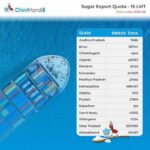July 12 to July 16, 2021.
POSITIVE BUT CAUTIOUS
The sugar futures market in NY closed out the week with October/2021 at 17.66 cents per pound, a 38-point high against the previous week, keeping the pendular movement for a few weeks now that sometimes leans upward and sometimes downward with the same strength and intensity. But this has been the tone of the commodities.
Over the last 30 days softs had a slight recovery, with cotton, coffee and sugar increasing between 4-5% – the same percentage of gas price increase. In the yearly accumulated, coffee takes the lead at 25%, cotton at 15% and sugar at 14%, but they are all way below the energy market led by ethanol (73%), gas (59%) and oil (between 41-46%).
No wonder the ethanol and sugar markets in Brazil are paying like never before, but it’s prudent to note that the sector got a little help from the grains and the real devaluation against the dollar over the year, in addition to the aggressive rise in purchase on the part of the funds. We have witnessed a perfect storm and though we are optimistic over the long term, that is, we believe in higher prices in cent per pound for the 2022/2023 crop, it will be harder to repeat the good prices in real per ton.
The volume of sugar futures contracts traded in this year’s first semester comes to a little over 17 million units, 30% smaller than that of the same period last year. It’s a significant reduction that projects a total shrinkage of 11 million contracts up until the end of the year. What might these numbers mean?
We see that from January to July/2020 the total of traded contracts amounted to 24,203,000 units while the average of open contracts over the same period was 1,048,000 units. Theoretically, 24 traded units for each open contract, which makes up a variety of operations that don’t necessarily change the open position, like spreads and especially the high frequency traders (HFT) who run day-trade operations and are zeroed out by the end of the day, just to mention two. This year, the above ratio has dropped to 16 traded units for each open contract. Have the HFT’s decreased their appetite for the sugar market? Might the low volatility have decreased the traders’ appetite?
The annualized sugar volatility of the last 100 days has been 31.4%, of the 50 days, 27.4% and of the 20 days, 25.1%. That is, the volatility has decreased. We still have to check if HFTs’ appetite has too.
Another point traders have commented on is the weak activity on the physical sugar market that causes smaller turnover of the trading companies with reduced use of hedge and the adjustments in the books via spreads. It gives us the impression that the physical market in general is on standby mode waiting on a series of definitions such as consumption recovery, Brazilian crop size, Covid-19 variants that still scare the markets (45 American states show a spike in infections) or even exogenous effects led by oil and the American inflation. When there is too much uncertainty in the air, acting with great caution is the best thing to do. It seems to us that this is the mood right now.
The fourth estimate of sugar pricing for exports of the mills for the 2022/2023 crop shows that the companies have slowed down the movement of pricing, probably worried about the smaller sugar availability for the next crops, which can cause new highs in US$ and possibly reflect on the pricing of the current crop, whose obtained average values are way below the market values.
Therefore, based on our model, the estimated fixed value up until June 30, 2021 was 5,856 million tons of sugar priced for the period. In June, reflecting the decrease in pricing, the mills hedged a little over five hundred and thirty thousand tons of sugar, the smallest volume since February.
All through June, the mills were able to fix R$1,907 per FOB ton on average, the lowest price since February. It’s a R$70 drop per ton against the fixations obtained in April. This goes to show that our recommendation to continue fixing prices, even tied to the purchase of an out-of-the-money call, has been the best policy. Those who followed the suggested policy added on – depending on the period when the fixation occurred – up to R$200 per ton, a value which can be greater depending on the expiration of the options purchased over the period.
The average price found over the period from October/2020 to June/2021 registers 14.33 cents per pound, without taking into consideration the polarization premium. The average value of fixation is R$1,822 per FOB Santos ton, equivalent to R$0.7933 per pound, both including the polarization premium.
You all have a nice weekend.
Click here to read Episode 1
Click here to read Episode 2
Click here to read Episode 3
Click here to read Episode 4
Click here to read Episode 5
Click here to read Episode 6
Click here to read Episode 7
Mr. Arnaldo Luiz Correa is the Director at Archer Consulting. He is a Risk Manager with an experience of almost 30 years in the agriculture commodities market.
To get in touch with Mr. Arnaldo, write on arnaldo@archerconsulting.com.br

















